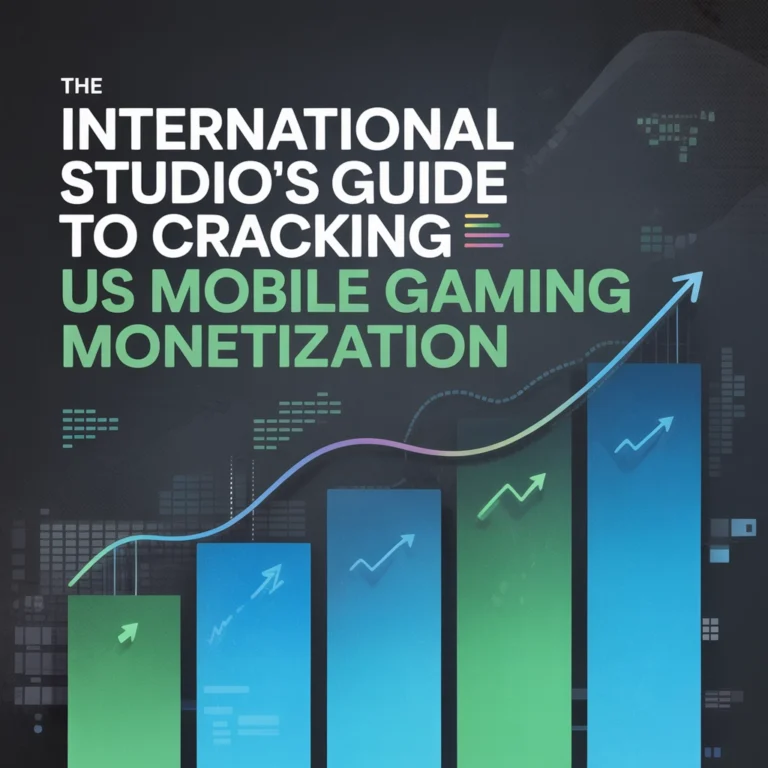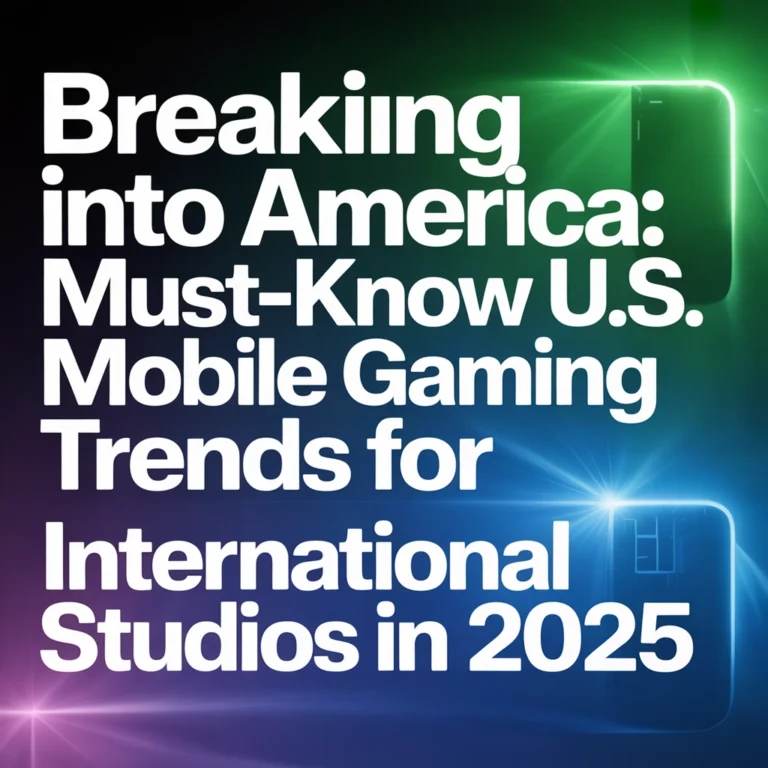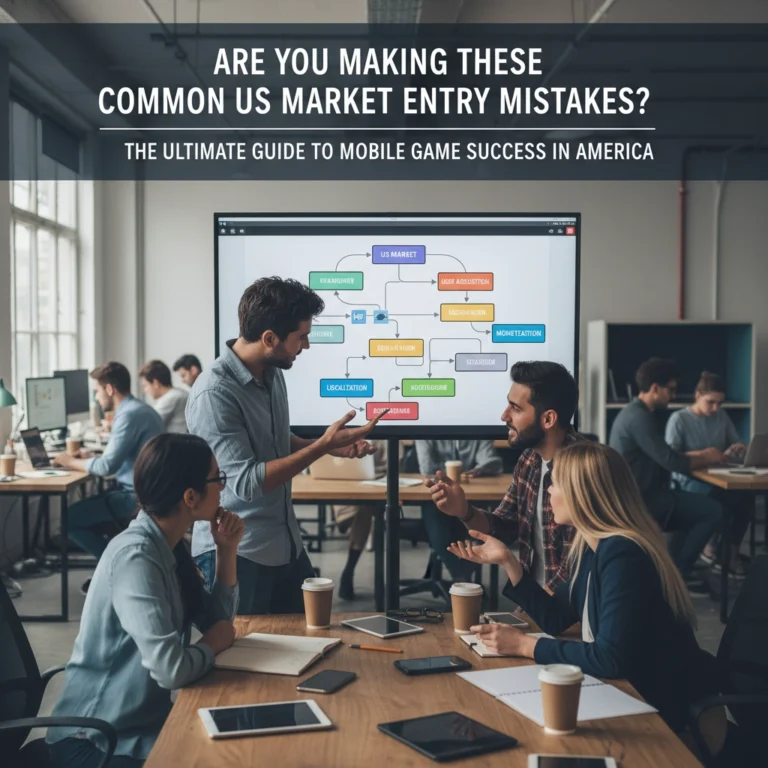Cracking the Code: How International Mobile Games Can Win Big in the U.S. Market in 2025

If you’re an international mobile game developer, you probably have your sights set on the U.S. mobile gaming market—and for good reason. It remains the world’s largest and most lucrative mobile gaming opportunity, generating a whopping $52 billion in in-app purchase revenue in 2024 alone. Sure, downloads aren’t growing at the breakneck pace they once were, but what matters more is this: revenue per player keeps climbing, and players are more engaged than ever. So, how do you break in and actually win big?
Let’s get into the strategies, trends, and tactical moves you’ll want in your playbook if you’re aiming to make your mark (and your revenue goals) in America in 2025.
Understanding the Current U.S. Mobile Gaming Landscape
First, let’s set the scene. The U.S. market isn’t saturated, but it is mature—meaning every player has plenty of options and the bar for quality, creativity, and engagement is set sky-high. Despite that, there’s good news: time spent in mobile games rose 8% globally over the last year, and American players are leading the charge on spending.
Perhaps most exciting: Mobile gaming demographics are shifting fast. The stereotype of teenagers glued to their screens is outdated. Today, more adults—including a growing segment of women and users over 35—are picking up mobile games as their go-to entertainment fix. This is a huge opportunity for studios outside the U.S. to introduce genres and gameplay styles that Americans haven’t tried (yet).

Smart Approaches for Market Entry
Get Granular with Platform Strategy
Not all platforms (or players) are created equal. In the States, the App Store and Google Play each have their quirks:
- App Store: Excels for event-heavy and deeply engaging titles, like Pokémon TCG Pocket or Royal Match.
- Google Play: Rewards social, casual, and multiplayer experiences—think Ludo King.
Take the time to understand where your game fits best and tailor your marketing, content updates, and monetization tweaks accordingly.
Embrace Hybrid Monetization
Gone are the days when shoving a few ads into your free-to-play game was enough. The top performers are tapping into a blend of monetization methods, mixing ads, in-app purchases, subscriptions, and sometimes even paid downloads. This hybrid monetization approach isn’t just good for your bottom line—it matches the American audience’s increasing comfort with spending on games they love. In 2024, in-app purchase revenue alone grew 13% year over year in the U.S.
Navigating Privacy (and Why It’s Actually Good News)
Things have changed on the privacy front—if you relied on ultra-targeted ads and invasive tracking, it’s time for a new game plan. Strong content, authentic marketing, and creative user acquisition are the new currency. American players care about privacy, and recent policy changes (like ATT and GDPR) mean everyone’s playing on a more level field.
So what works now? Organic reach, content creators, partnerships, and community-driven hype. If you’re an international developer, this means you’re less likely to get crowded out by giant companies with data monopolies. Get creative in how you talk to players and build buzz.
Genre, Content, and Engagement
Ride the Hybrid Casual Wave
Hyper-casual games had their fifteen minutes. Now, hybrid casual is taking over—games that are easy to pick up but offer richer experiences and longer retention. For international teams, this is perfect: if you have a background in casual or mid-core games, you can adapt your IP into a format that hits both mass appeal and deeper engagement.
Cross-Platform Play Is Your Friend
American gamers are hungry for flexibility, wanting to bridge the gap between their phone, tablet, PC, or even console. Expanding your title’s reach to other platforms isn’t just a nice-to-have, it can multiply your revenue and extend your game’s lifecycle in the U.S.—especially as streamers and competitive gamers spotlight new titles.

Maximizing U.S. Monetization
Target High-Value Players… But Don’t Ignore the Masses
While premium game sales and certain genres (simulation, card, board) pack a punch revenue-wise, the biggest wedge comes from a free-to-play core with strong in-app incentives. Focus on these strategies:
- Craft compelling economies: Make sure your in-app purchases feel valuable, not forced.
- Layer in subscriptions: Consider battle passes or VIP clubs for ongoing value (Americans love a good deal).
- Offer premium ad experiences: Optional rewarded ads are seen as positive by many U.S. players—especially if they unlock cool cosmetics or speed up progress.
Event-Based Engagement
If there’s one thing American mobile gamers respond to, it’s events.
Limited-time challenges, seasonal surprises, tournaments, and sudden content drops all push players to spend and stick around. Create a steady calendar of reasons for people to check in and engage (and reward your whales for their loyalty).

Marketing for the Privacy-First Era
Your user acquisition playbook has to be more creative than ever. Here’s how to stand out:
- Influencers & Creators: Partner with content creators on YouTube, Twitch, and TikTok who reach your target demo. Playthroughs and “first look” streams can move the needle fast.
- Community Building: Invest in Discord servers, in-game events, and fast customer support. Communities drive retention and word-of-mouth downloads.
- Localized Content: Americans expect their humor, pop culture, and references. Don’t just translate—localize your game experience to make it feel “made for here.”
Long-Term Success: Metrics & Mindset
It’s not just about any single launch or one-off big hit. To win in America long-term:
- Double-down on retention: Use regular updates, ongoing events, and meaningful progression to keep people coming back.
- Refine ASO: Your App Store Optimization can make or break discoverability. Test your store pages, icons, titles, and keywords—what works back home might not resonate in the U.S.
- Personalize when possible: American mobile gamers appreciate personalization—think tailored offers, push notification timing, and even adaptive difficulty.
- Iterate fast: This market rewards teams who can listen, experiment, and evolve. Player feedback (even the harsh stuff) is gold.
The Takeaway
The U.S. mobile gaming market isn’t for the faint of heart—it’s fast, competitive, and packed with opportunity. The great news? With mature, high-value players, shifting demographics, and the rise of hybrid monetization and genre-busting titles, there’s never been a better time for international studios to crack the code.
Focus on creative monetization, privacy-first marketing, deep engagement, and sharp localization, and you might just find yourself on the next top-grossing chart—right at the heart of the world’s biggest mobile gaming stage.
Ready to take the next step? Discover how Systara can help you optimize for success and connect with the U.S. gaming audience. Check out our latest titles and case studies at Systara Games.






